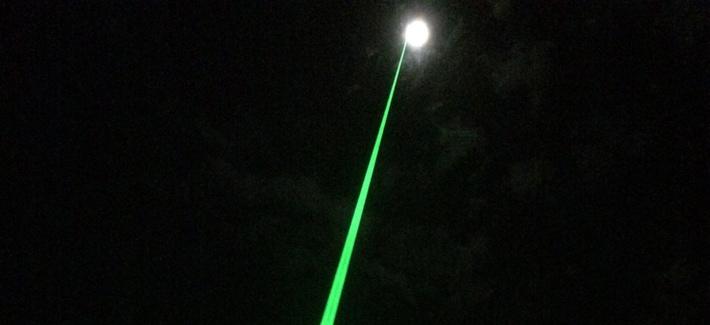A well-known satellite imagery analyst and China specialist has provided photos which reveal what appears a sophisticated anti-satellite laser base located in western China.
The satellite images were published by Indian Army Col. Vinayak Bhat, whose expertise is often widely cited in western media reports, and show a base with advanced satellite tracking capabilities and facilities which house large-scale lasers located about 145 miles south of the Urumqi, the capital of Xinjiang.

A full report featuring the satellite imagery was published by the Washington Free Beacon which concluded alarmingly, “China likely is pursuing laser weapons to disrupt, degrade or damage satellites and their sensors and possibly already has a limited capability to employ laser systems against satellite sensors.”
According to the analysis:
The Xinjiang base is one of those laser bases that include four main buildings with sliding roofs that Bhat assesses contain high-powered chemical lasers powered by neodymium.
Bhat estimates that the smaller shed with the sliding roof is a laser tracker. Taken together, the Chinese can fire one to three of the lasers against an orbiting satellite that China is seeking to disrupt.
Giving credence to the claim, the report cites the US Defense Intelligence Agency which said in its own assessment published in February that China is set to deploy a ground based laser cannon at some point next year.
#China #space denial weapons.#PLA has deployed #DEW & #HEL to dazzle/disable/destroy satellites.#EMP & mobile pulse generators being experimented.#RISAT1 & #GSAT6A still fresh in mind.
Read more:
Need to harden own equipment.https://t.co/5csGt75rwG pic.twitter.com/04jFLwEpxK— 卫纳夜格@Raj (@rajfortyseven) March 23, 2019
The DIA analysis noted China “possibly already has a limited capability to employ laser systems against satellite sensors.”
“China likely will field a ground-based laser weapon that can counter low-orbit space-based sensors by 2020, and by the mid-to-late 2020s, it may field higher power systems that extend the threat to the structures of non-optical satellites,” the report entitled Challenges to Security in Space concluded.
The Pentagon described the energy directed weapons as possessing the capability to “disrupt, damage, or destroy enemy equipment and facilities.”
“These weapons, which can have effects ranging from temporary to permanent, include lasers, high-power microwaves, and other types of radiofrequency weapons,” the report added, and described the ease of concealing the source of such attacks.
And the latest satellite images appear to confirm the Pentagon intelligence scenario, and may further indicate China is further along in deploying such weapons than was previously thought.
Satellite imagery expert Col. Bhat noted in his analysis that the newly uncovered Chinese complex includes four main buildings with sliding roofs, three of which that are linked to “two vacuum spheres,” which suggest that “chemical lasers are being used with rare earth metals like neodymium.” Bhat said the shape and size of the buildings strongly suggest this.
“In terms of satellite tracking, Chinese technology has grown in leaps and bounds. There are now many space tracking stations dotted all over the country — like one in Ngari, Tibet — which provide accurate data about satellites to be targeted,” Bhat said as part of a report for an Indian outlet, The Print.
“Once the accurate satellite path and other data is known, directed energy weapons (DEW) located at five different places can take over the task. One such facility is located in Xinjiang,” he added.
Bhat also said recent satellite imagery evidence shows China has been pursuing so-called exotic weapons systems for years now, and has already established an electromagnetic pulse facility in Xinjiang, as well as an EMP simulators, capable of producing a “pulse produced by a nuclear blast or solar flare that can disrupt electronics for thousands of miles.”
Meanwhile a prior report produced by the Center for Strategic and International Studies outlined just how quickly rival satellites could be taken out by such technology — literally in the blink of an eye: “These attacks operate at the speed of light and in some cases, can be less visible to third party observers and more difficult to attribute,” according to the report.
via ZeroHedge News https://ift.tt/2CQryCl Tyler Durden

